Japan is known for some of the unique and different approaches it has on ordinary things. For example, instead of normal restaurants, they have ones with robots in them. Instead of looking at puffer fish in an aquarium, they eat them raw. Instead of having winter in June, they have high-30 degree summers. So it comes as no surprise then that every now and then Japan’s car manufacturers will bring out something completely wild and out of this world. Enter, the Nissan Juke.
When Nissan first launched the Juke back in 2009, the world scoffed. People said it wouldn’t be a hit and criticised it for its polarising design. Fast forward to 2015 and the Juke has gone on to become one of Nissan’s best-selling models. And it’s even carved out an entire segment along the way. Rivals such as Honda, Ford, Chevrolet/Holden, Mazda, Peugeot, and Fiat have since brought out small crossovers to take on the Juke. But what makes the Juke stand out from the rest is the design.
The Way It Looks
The Juke recently received a mild facelift, love it or hate it, you can’t say it’s not an interesting looking car. It’s a car that’ll split opinion like a flag referendum. People still gave it a second look even though Jukes are a common sight in Japan. Along with the facelift, the NISMO version also received an update. That’s the car you see here, the new Juke NISMO RS. The ‘RS’ bit is new and indicates this is faster, more hardcore, and therefore better, than the old Juke NISMO.
The NISMO styling adds an aggressive front bumper, big sporty alloys, red exterior trim, a rear spoiler, and a rear diffuser. These extra bits add to the Juke’s sporty character while at the same time the raised ground clearance means it’s literally a cut above its hot hatch rivals. A touch I particularly liked were the hidden rear door handles, which screamed Alfa Romeo (or first-gen Terrano depending on your preference).
It’s one of those cars that’ll appeal to those where style and standing out are a priority. Of course, if you wanted a conventional looking NISMO hatchback there is the Note NISMO. But as a style statement, the Juke definitely shows people you’re not a sheep and want to stand out from the crowd. Luckily, the Juke NISMO RS isn’t all show and no go.
Behind The Wheel
NISMO is Nissan’s motorsport division, similar to what AMG is to Mercedes. NISMO tuned Nissans have been few and far between, mostly special edition GT-Rs. But recently NISMO have played around with more Nissan cars and hopefully one day they’ll be as significant to Nissan’s model lineup as AMG is to Mercedes.
Under the bonnet of this new NISMO RS is still a 1.6-litre direct injection petrol turbo engine, but now it develops 215bhp and 250NM of torque. That’s enough to get this little pocket rocket to 100 km/h from standstill in 7.2 seconds. Power is sent to all four-wheels via a CVT gearbox, with an 8-speed manual override. It’s not brutally fast by any means, but for most driving situations the NISMO RS proved to be brisk enough.
This engine is related to the engine found in the Clio RS and is quite a sweet little thing. The power delivery is quite smooth but it’s the torque that impresses most. Peak torque is available quite early at 2500rpm, though it doesn’t come alive until that point. In Sport mode with manual gear changes, you can ride the tsunami of torque up to around 5000rpm and feel like you’re going a million miles an hour, however it does start lose some puff near the redline. It’s no GT-R, but for what it is it’s mighty impressive. Unfortunately the droning sound of the CVT did take away some of the ‘sportiness’.
On the motorway the Juke proved to be a comfortable cruiser. Most times it was quiet, though the main intrusions came from tyre roar and CVT. The depressing noise from the CVT did irritate at times and made me wish for a conventional auto a dual-clutch transmission instead. But in terms of economy, the CVT seemed to do its job properly because the Juke was relatively frugal. The read out said I was averaging around 15km/L (6.6L/100km) of fuel, which wasn’t bad considering I’m not the best at eco driving. To help you out, the Juke had three different driving modes; Eco, Normal, and Sport. They don’t really do much in the way of changing the personality of the car but does adjust the throttle, transmission, and air conditioning accordingly.
‘Normal’ was, well pretty normal, while ‘Eco’ was ideal for town driving. It held back the power so you didn’t look like a boy racer with wasabi up your backside at every set of lights, while at the same time maximising economy, if you care about that sort of stuff. Obviously ‘Sport’ mode was the best as it turned everything up to 110%. Responses, and enjoyment, went up and if I had one of these it’d be in Sport mode all the time.
The NISMO RS was good in a straight line but what surprised me was its ability to go around corners too. The NISMO sits on lowered sports suspension and they’ve done a great job with the setup. It’s not overly firm or that the ride was unacceptable on the smooth Japanese motorways, though on less than perfect roads you could feel the stiffened suspension. The payoff for this was the Juke had little body roll through corners. There’s no getting away that it’s taller than its rivals, but for an SUV it didn’t lean as much as you’d expect it to. As a result you can’t push the Juke quite to the same limits as you can with a standard hot hatch, but it’s still an effective way of going fast.
Steering was a bit light, as it is in most Japanese cars, but once you got going there was decent feedback. It’s not quite as precise or direct as something like a Mini Cooper S, but it never felt numb or disconnected. The four-wheel drive setup was competent though. Whatever NISMO did to the Juke, it translated well on the road. What seemed to be a pattern when I do these reviews, the weather conditions were less than great. The road up Mt. Nasu had a fresh coating of rain water, so it was ideal to test the Juke’s grip. And not once did it do anything I didn’t want it to do. It gripped and went about its business like it was a normal trip to the shops.
The punchy engine and the turbo boost, coupled with the great ability to carve its way through tight hairpins gave the impression of a mini-GT-R, albeit shorter and taller. Stay with me here, the GT-R as we know is a great way of covering great distances be it on a motorway or up a mountain. The Juke, for what it was, was a great tool to have fun up a mountain road in.
That’s not to say it’s a heart-racing adrenaline rush, a Mini is a better ‘hot hatch’ but the Juke’s SUV/crossover body style and practicality, along with the raised driving position and four-wheel drive makes a compelling package. There’s also something comedic about going fast in something tall.
The Bits Inside
Another factor that made the Juke a hoot around corners were the comfortable and supportive Recaro sports seats. Supercars aside, I don’t think I’ve experienced seats quite as good as those in the Juke NISMO RS. Trimmed in leather and alcantara, with Recaro and NISMO badging, they made the interior feel sporty and special. In fact, the touches of alcantara on the dashboard, steering wheel, and doors were just enough to make the NISMO RS feel like a different car to the standard Juke. I liked the red tachometer too.
Other than these small details, the interior is pretty much the same as the standard Juke. The motorcycle-inspired transmission tunnel remains, though in the NISMO versions it’s a single (shiny) black colour. There were faux-carbon fibre trim scattered here and there and a nice little NISMO badge on the centre console to remind you of what you’re in.
The Juke isn’t a big car, but for people in the front, there’s enough space to get comfortable. Those amazing Recaros have good adjustability so anyone can get comfortable in them. Getting in and out was easy thanks to the extra height over a hatchback. Space in the back was a little tight for me, it’d only be good for short trips. But for small kids, they’ll be perfectly comfortable there. That is unless they don’t like the dark spaces or are claustrophobic. The boot was a good size and of course the back seats can be folded down flat with a 60/40 split.
So the Juke is relatively sporty, but like any good hot hatch it’s also practical and easy to live with. The light steering was a godsend around town, especially on the small tight roads commonly found in Japan. With the raised ride height you get a better view out too. Visibility was generally good, the large wing mirrors helped a lot, though in some case I found them a bit too big. The thick C-pillars did create a bit of a blind spot too at the back too. If it weren’t for the rear-view camera, the small rear window would’ve been a concern too.
Equipment-wise, the Japanese-spec Juke NISMO RS came with pretty much all the bells and whistles you’d expect in a car of this size, and some. It didn’t come with cruise control (which was a surprise) but it did have pretty much everything else. The infotainment system was different to that on Nissans we get in NZ, chiefly because it was more high tech. The sat-nav system was great and had multiple angles. It picked up and corrected mistakes (on my part) quite quickly.
The 360-degree surround view camera was a brilliant feature that helped with parking. The Juke also came with a drive information display showing important readouts such as torque, turbo boost, and G-force meter. It was a bit gimmicky but that didn’t mean it wasn’t any fun to use. In my mind it reinforced the feeling of being in a mini-GT-R.
What it’s up against
| Brand/Model | Engine | Power | Fuel L/100km | CO2 g/km | 0-100 km/h | Price – High to Low |
| Mini Cooper S 5-Door | 1.6-litre, four-cylinder turbo petrol | 192bhp/141kW | 6.0L/100km | 140g/km | 6.9 sec |
$45,200 |
| Renault Clio RS | 1.6-litre, four-cylinder turbo petrol | 200bhp/150kW | 6.3L/100km | 144g/km | 6.7 sec |
$42,990 |
| Nissan Juke NISMO RS | 1.6-litre, four-cylinder turbo petrol | 215bhp/157kW | 7.4L/100km | 165g/km | 7.2 sec |
¥3,434,000 (approx. $42,109) |
| Peugeot 208 GTI | 1.6-litre, four-cylinder turbo petrol | 200bhp/147kW | 5.9L/100km | 139g/km | 6.8 sec |
$38,990 |
| Volkswagen Polo GTI | 1798cc, four-cylinder turbo petrol | 192bhp/141kW | 5.6L/100km | 129g/km | 6.7 sec |
$35,990 |
| Ford Fiesta ST | 1590cc, four-cylinder turbo petrol | 182bhp/134kW | 5.9L/100km | 138g/km | 6.7 sec |
$34,990 |
The Good and the Bad
| Pros | Cons |
| Usable real world performance | CVT isn’t a good match for this car |
| Unique styling | Styling may not be for everyone |
| Raised ride height | Tight rear space, small rear doors |
| Handling and grip | Still not a engaging as hot hatch rivals |
| Comfortable motorway cruiser |
What Do We Think?
Unconventional; that pretty much sums up the Juke NISMO RS. The design is a world away from the typical conservative designs we’ve come to expect from Japan. Whether you like it or not is not the point, the fact that Nissan were brave enough to try something different is worth applauding. It’s an effective way of covering long distances but it’s not quite as dynamic as a regular hot hatch. It does have also advantages over a standard hot hatch such as the raised ride height but it’s still no mud-crawler.
The NISMO RS proved to be a worthy alternative for those wanting something quick like a hot hatch but with a wider breadth of ability. Or for those wanting something quick and quirky. It may not be for everyone but thank god for Nissan daring to do something different.
But for me, the best thing about the Juke NISMO RS is that it shows what NISMO are capable of. If they’re able to turn the quirky Juke into a proper alternative to established hot hatches, then who knows what they can do with the rest of the Nissan range in the future. Slowly but steadily NISMO’s fine tuning can be seen in more Nissan cars such as the Note, 370Z, and GT-R.
Japan’s car manufacturers have long gone without some sort of in-house tuning division, but NISMO proves that it’s entirely possible for them to have one. Hopefully NISMO will expand and play a bigger role in the future, Infiniti might even benefit from some of NISMO’s expertise. Perhaps with Nissan and NISMO’s lead, Toyota and TRD, Honda and Mugen, and Subaru and STI will also expand. Fingers crossed that happens and when it does, please bring some over to New Zealand!
| Vehicle Type |
Small Crossover/SUV |
| Starting Price |
¥3,434,000 (approx. $42,109) |
| Tested Price |
¥3,434,000 (approx. $42,109) |
| Engine |
1618cc four-cylinder DOHC turbocharged |
| Transmission |
CVT with 8-speed manual mode |
| 0-100 kph |
7.2 seconds |
| Kerb Weight |
1315kg |
| Length x Width x Height |
4165mm x 1765mm x 1565mm |
| Cargo Capacity |
354L |
| Fuel Tank |
50L |
| ANCAP Safety Ratings |
5 Star |


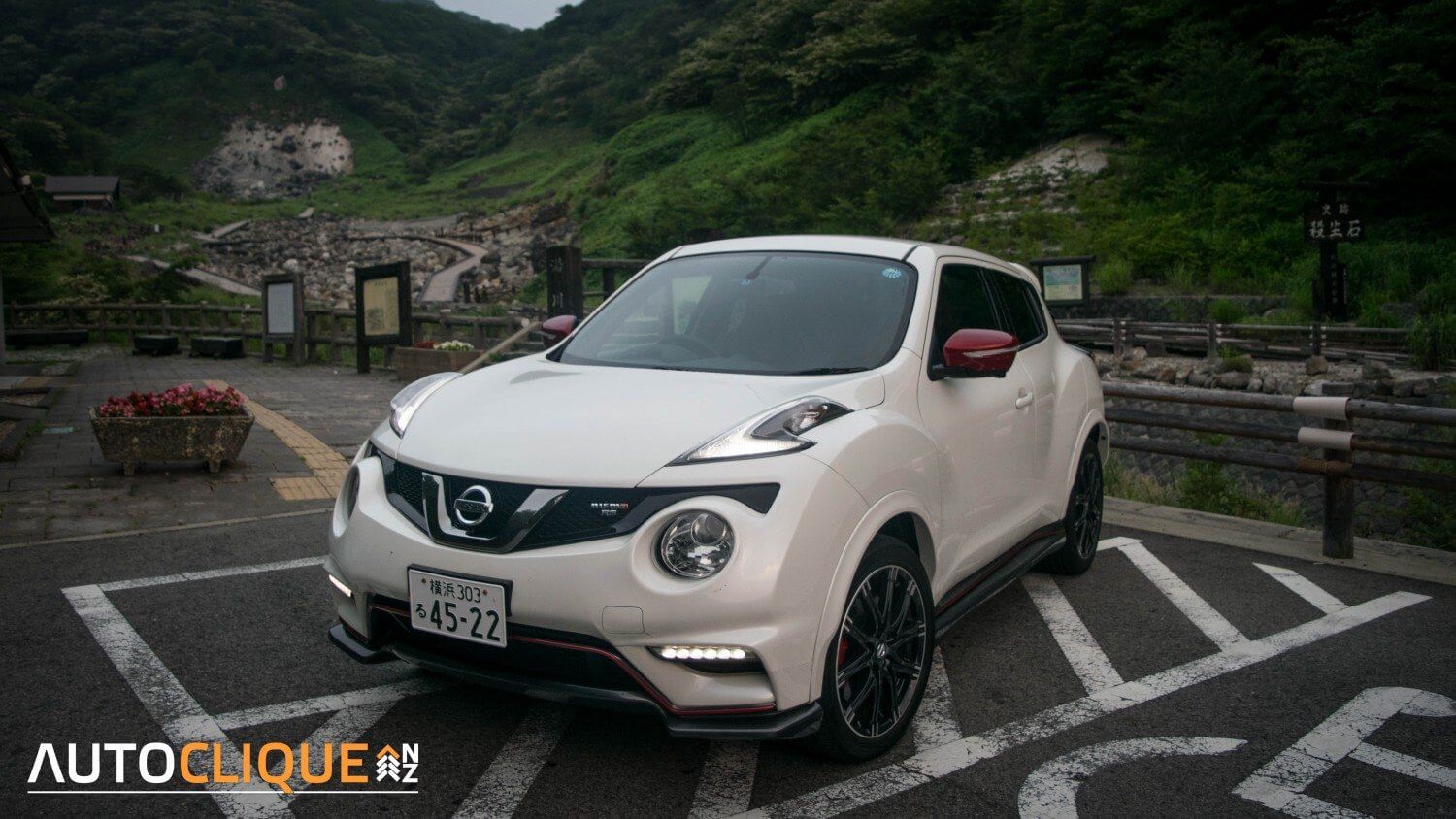
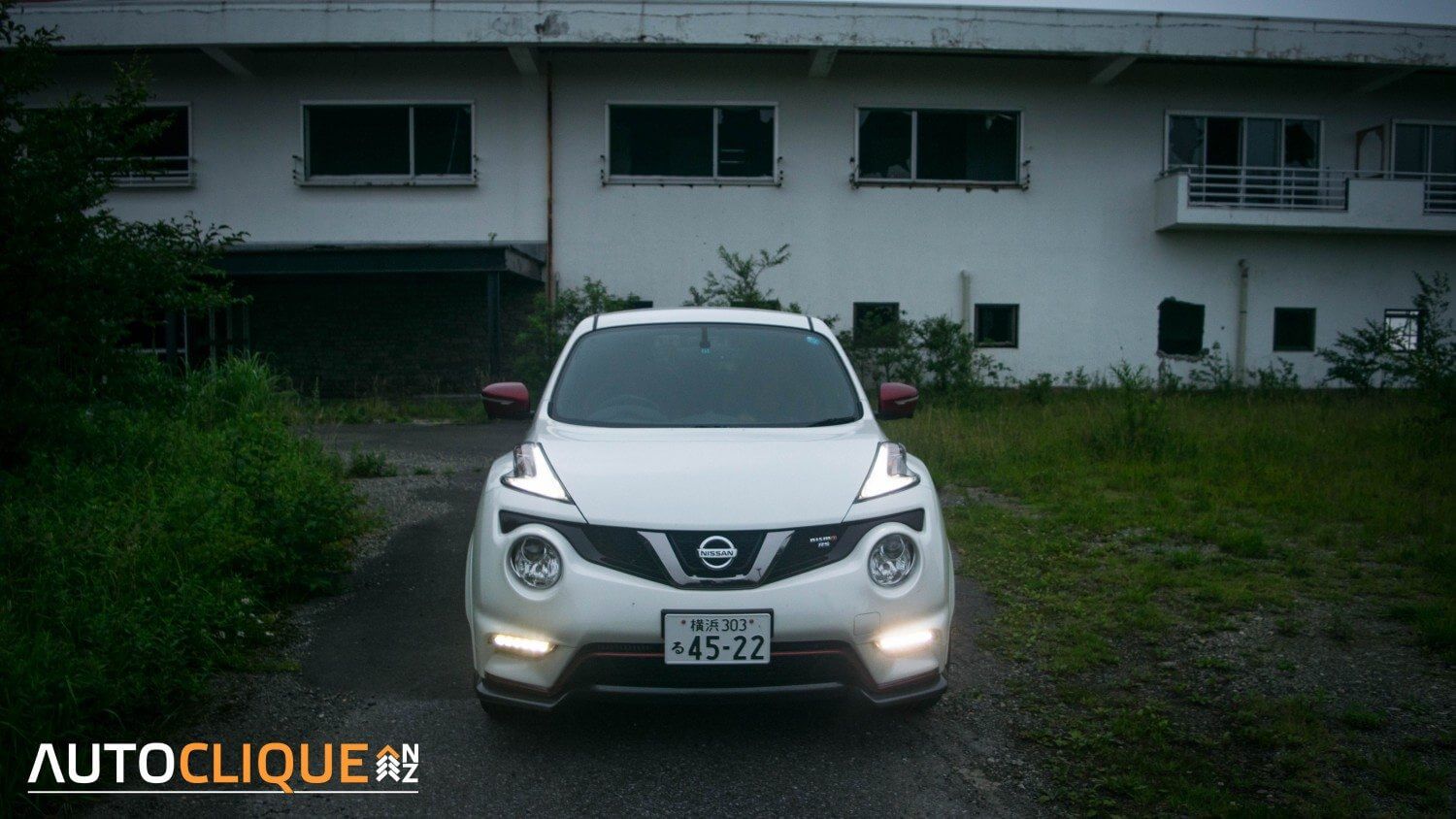
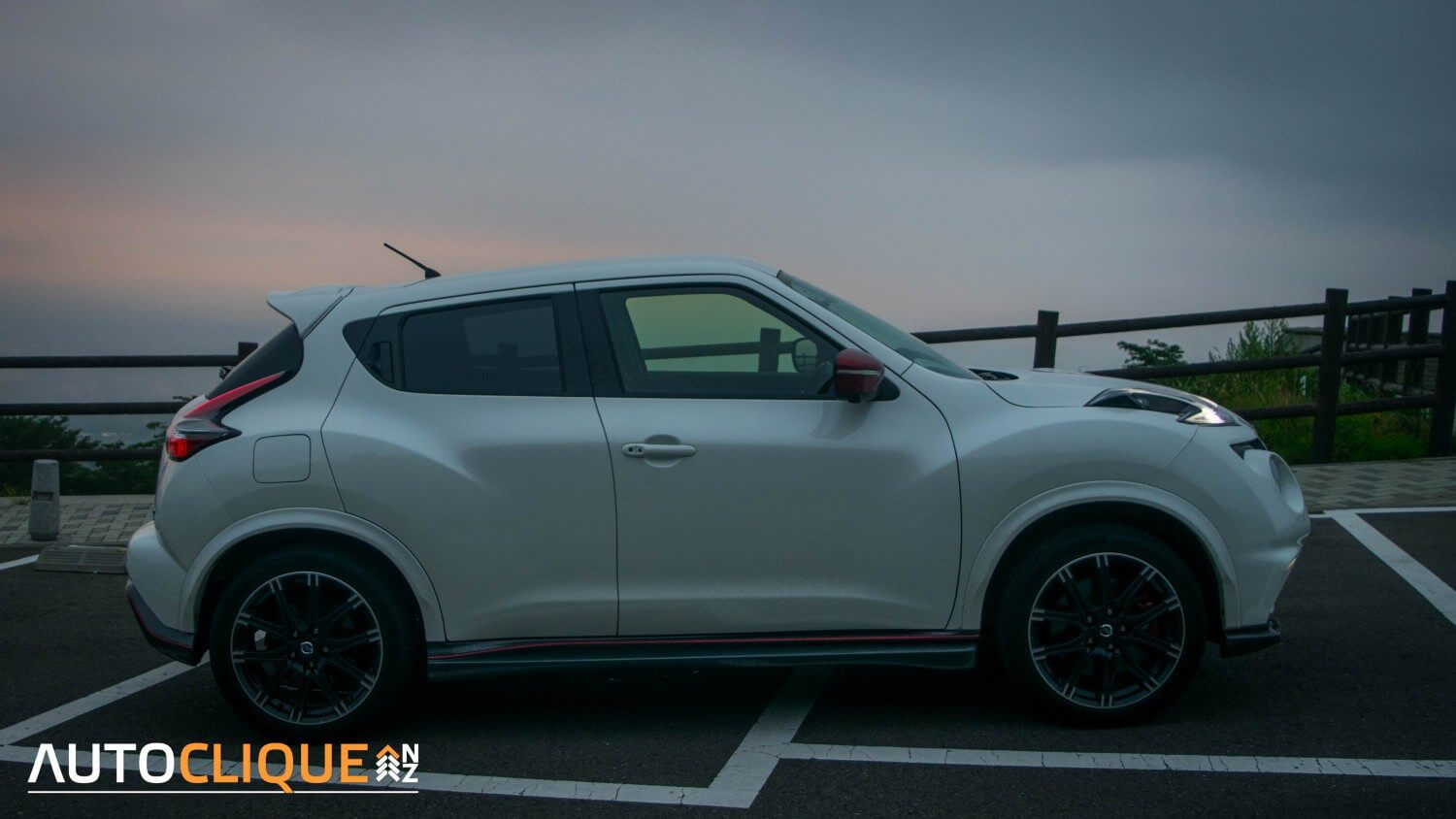
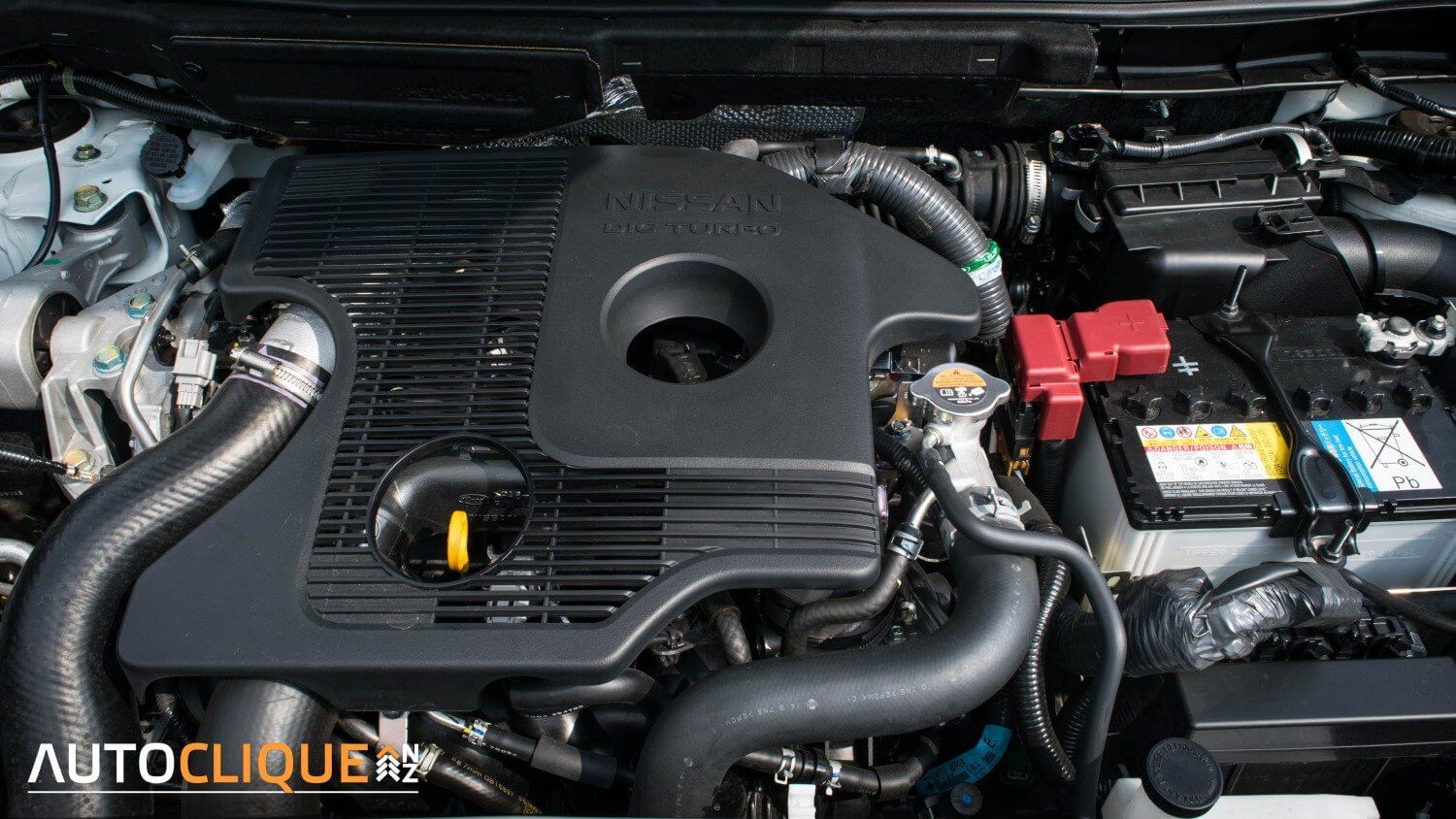
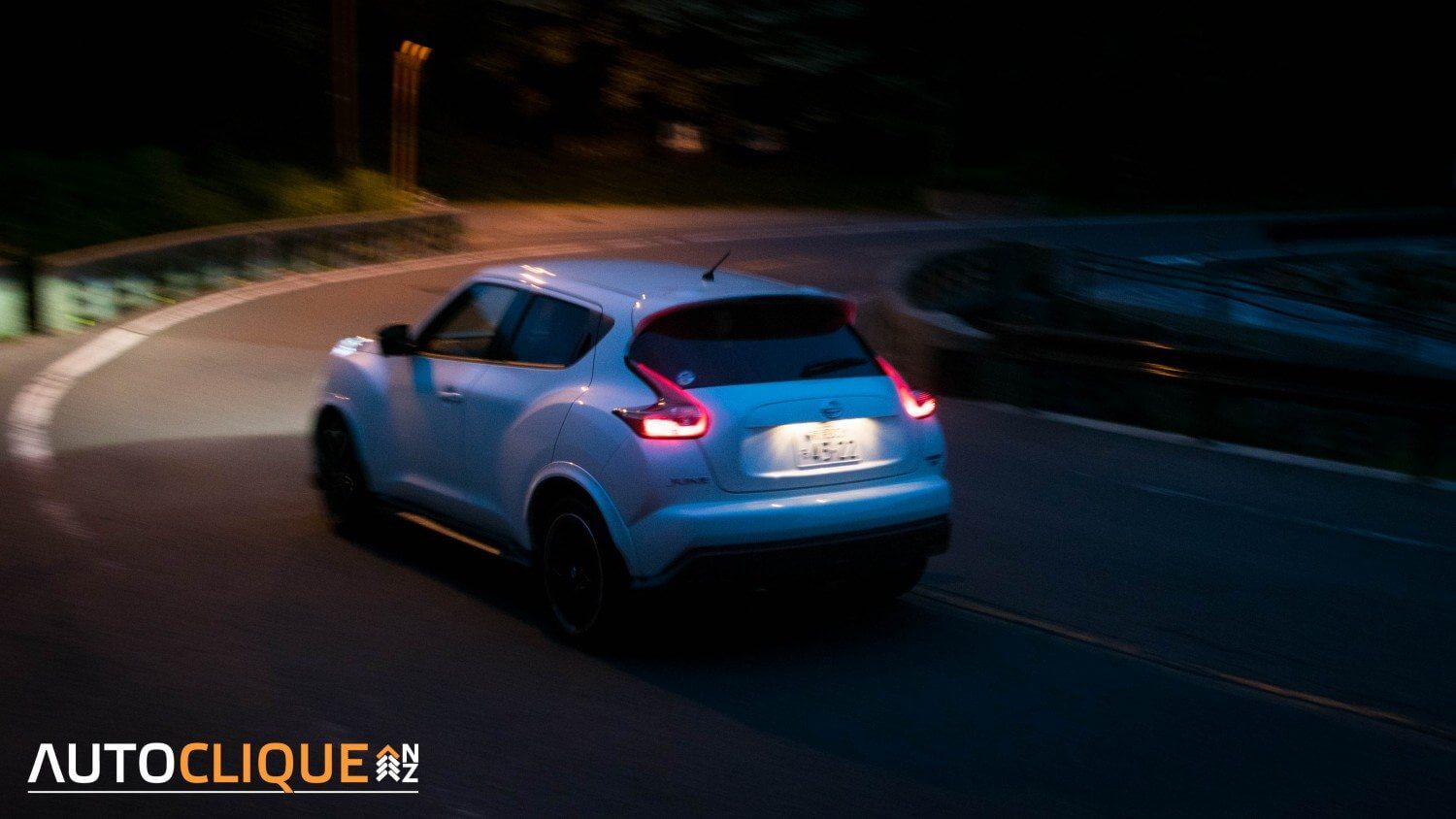


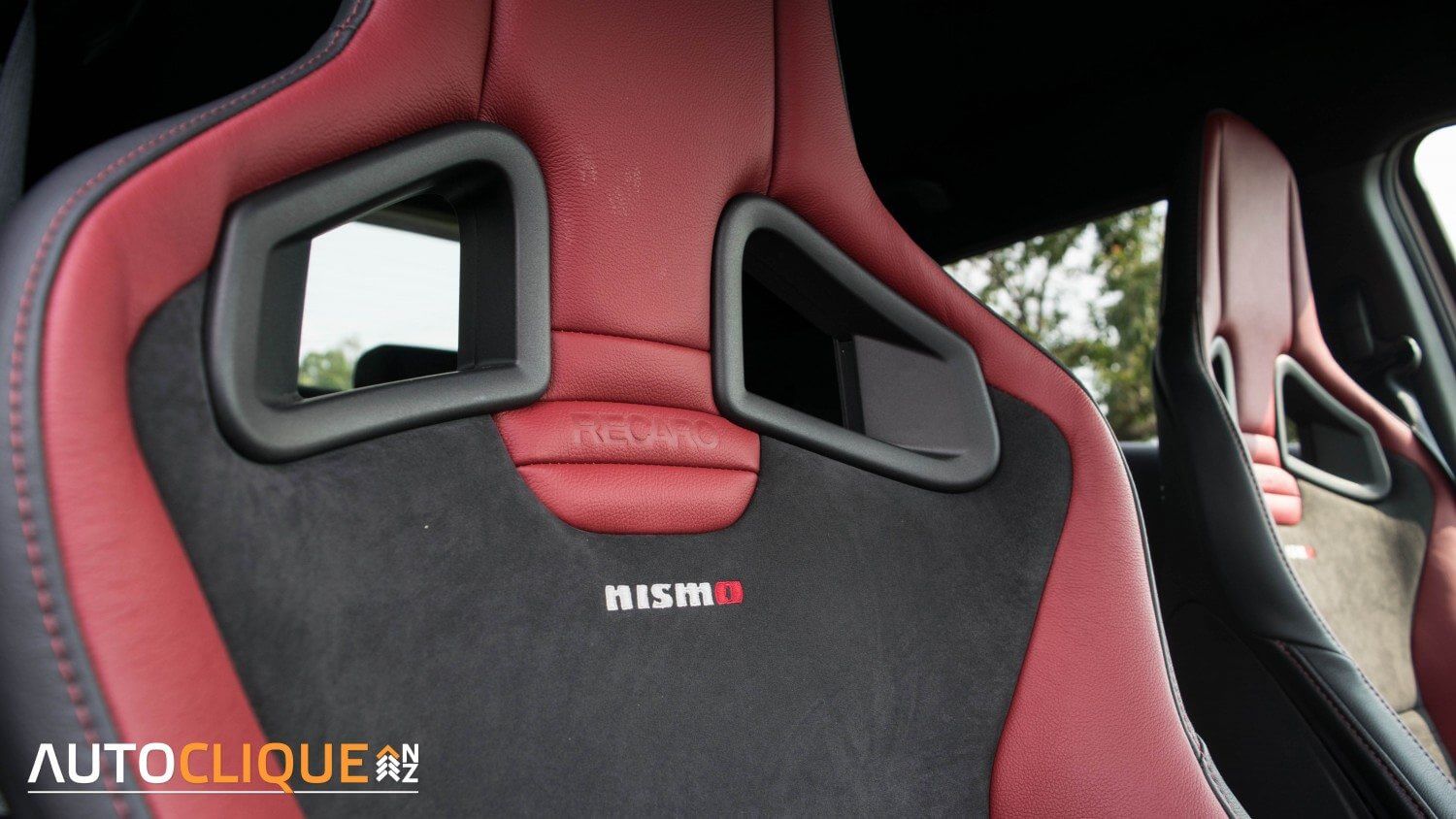

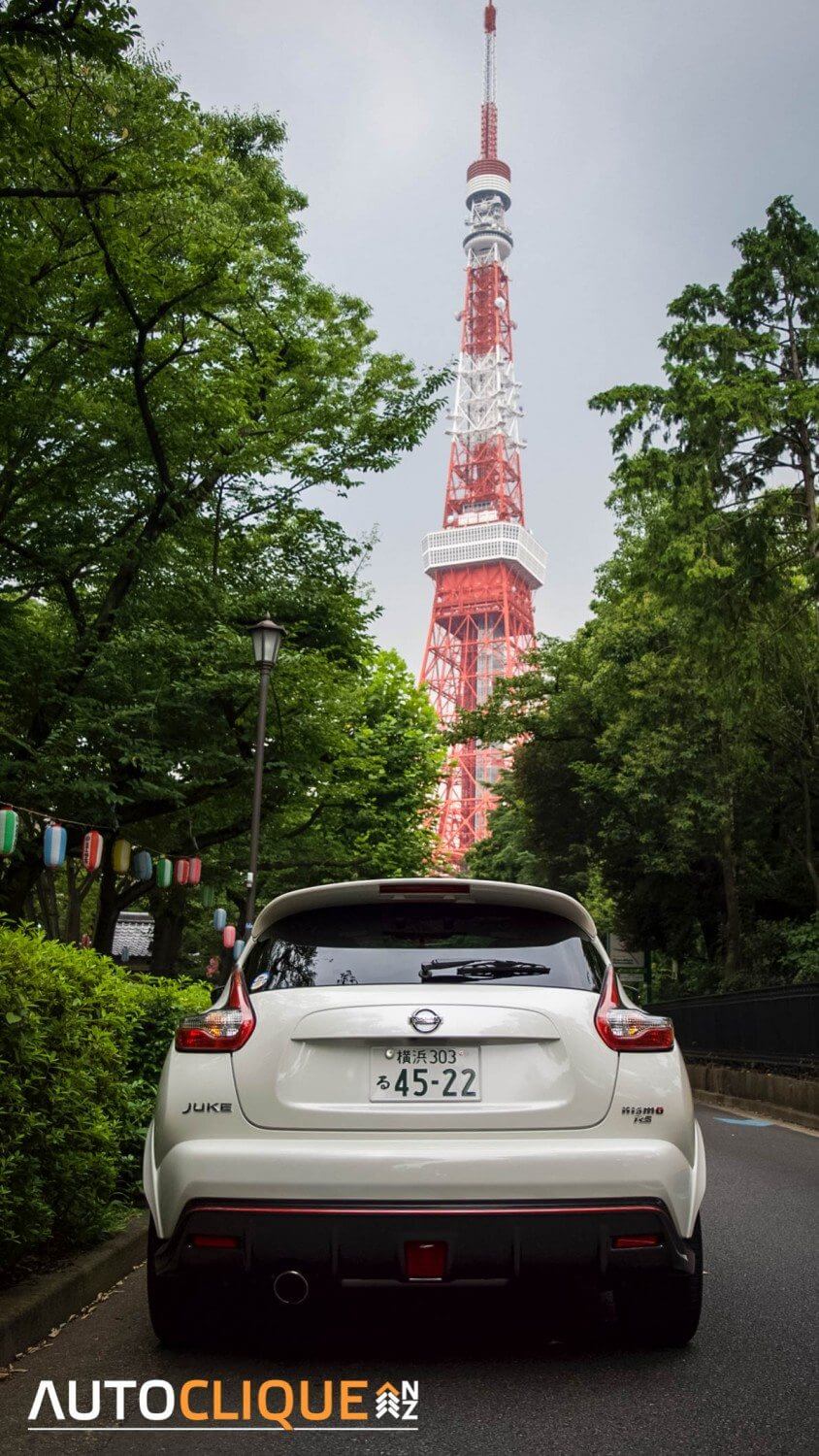











































Hi I have a 66 plate Juke NISMO rs. Am finding that when the roads are wet this car is terrible to drive. Even dangerous to drive. It skids all over the weels spin out of control. Am not a fast driver and have the can in normal mode. Any one else experience this?